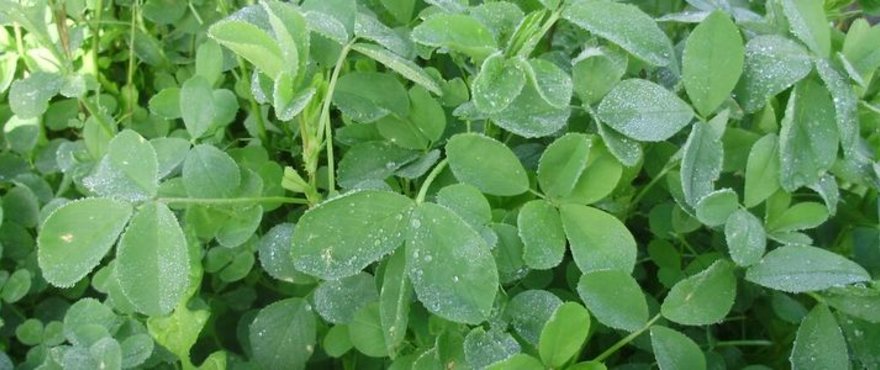Download a copy of the SARDI 10 Series 2 factesheet.
SARDI 10 Series 2 benefits from excellent winter growth and is a leader in grazing tolerance for a highly winter active lucerne. During its development, the breeder was successful in focusing on improving the very popular SARDI 10. The greatest emphasis was on increasing forage production and quality, pest and disease resistance, persistence and grazing tolerance. A key physical feature is the increased leaf retention down the length of each stem. These advancements allow for even greater adaptability to Australian farming systems.
Key Benefits
- Winter activity 10
- Excellent seedling vigour
- Excellent pest and disease tolerance
- Improved persistence over SARDI 10 and other highly winter active cultivars
- Top-end forage production
- Improved leaf retention on stem, compared with other highly winter active cultivars, leading to forage quality improvements
Segment
- Specialist year round hay production systems
- Short-term cropping rotations (3-5 years)
- High intensity systems such as dairy
Product Fit
Similar to its predecessor, SARDI 10 Series 2 is particularly suited to dryland mixed farming enterprises in Mediterranean climates with winter dominant rainfall patterns. As a highly winter active variety, SARDI 10 Series 2 will maximise production during winter months that typically receive the majority of rainfall. Its quick regrowth is also valuable in farming systems with intensive irrigated management including dairy farms and high yield hay and silage production.
Pest Resistance
SARDI 10 Series 2 is highly resistant (HR) to spotted alfalfa aphid (Therioaphis trifolii) and blue-green aphid (Acyrthosiphon kondoi). As with other lucerne varieties, SARDI 10 Series 2 is susceptible to damage from red legged earth mite (Halotydens destructor) and control measures need to take place prior to seeding or soon after germination. AgriCote seed coating will aid establishment in these circumstances.
Pest / Disease Resistance
SARDI 10 Series 2 is resistant (R) to phytophthora root rot (Phytophthora medicaginis) and anthracnose.
Variety Management/Agronomy
During the establishment period lucerne seedlings are vulnerable and care must be taken not to overgraze as it can cause a severe reduction in plant density. Once established, rotational grazing is very important to help improve persistence of the crop. Ideally spell before cutting or grazing until 5−10% of stems commence flowering, or crown shoots are 1–2cm long on 50% of plants. Avoid cutting or grazing lower than 5cm. It is recommended to not graze the crop for more than a two-week period following which it is then spelled to allow restoration of plant reserves. Regular set stocking at moderate to high stocking rates reduces persistence.
Performance
The excellent performance of SARDI 10 Series 2 has been demonstrated across a broad range of environments and farming systems in Australia. The significant breakthrough in lucerne breeding technology that combines seedling vigour with year-round growth, persistence and grazing tolerance means SARDI 10 Series 2 is well suited to challenging broadacre farming systems. SARDI 10 Series 2 has shown excellent forage yield against competitor varieties in the highly winter active category.
PBR: SARDI 10 Series 2 has been granted protection under PBR. Unauthorised commercial propagation or any sale, conditioning, export, import or stocking of propagating material of this variety is an infringement under the Plant Breeder’s Rights Act 1994.


